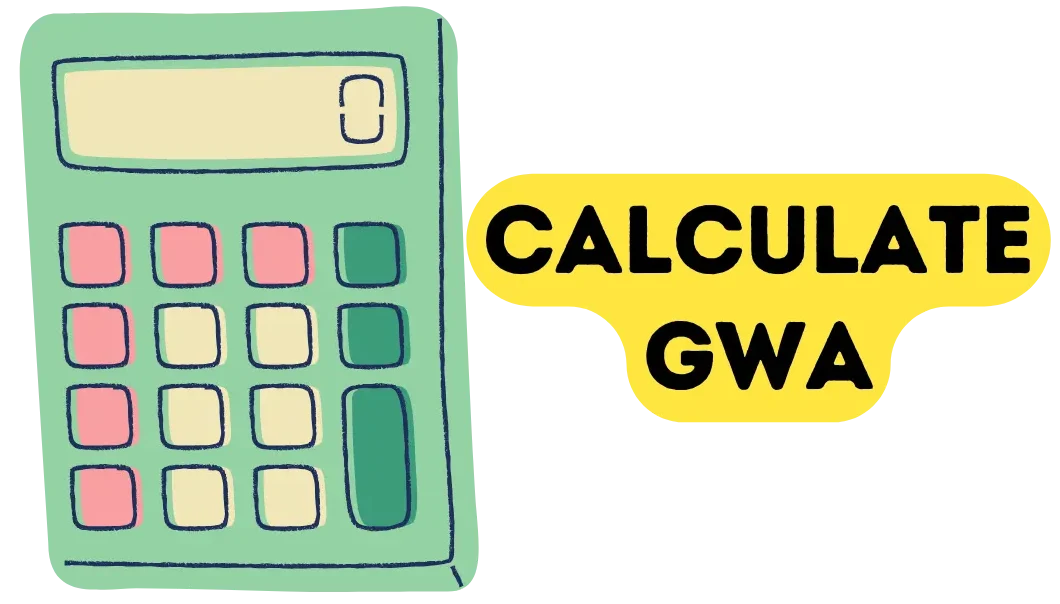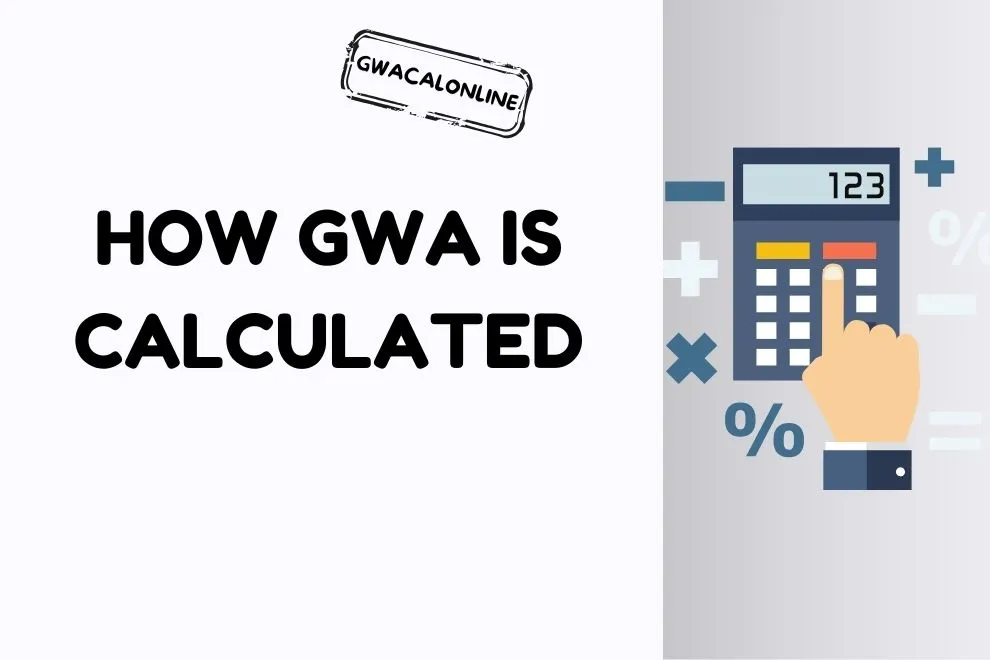Understanding your General Weighted Average (GWA) is crucial, especially for students striving to keep track of their academic performance and know the process of how to calculate gwa Philippines
Whether you’re in high school, college, or any academic institution that follows a grading system, knowing how to calculate your GWA can help you stay on top of your progress.
More importantly, GWA plays a significant role in meeting academic goals, whether for scholarships, honors, or simply understanding where you stand in your studies and how to calculate GWA in college as well.
GWA serves as a metric that represents your overall academic performance, calculated by assigning weight to each of your subjects based on their units and grades. Since it can be a bit tricky to compute manually, using a GWA calculator simplifies the process.
A GWA calculator takes away the manual guesswork and ensures an accurate and quick calculation of your average. Especially new students always confused how to calculate GWA in first year.
Instead of spending time figuring out the formula or getting lost in complex math, this tool helps you focus on understanding the outcome, which is what really matters.
In this guide, we will walk you through the steps of calculating your GWA manually, breaking it down into simple parts so you can understand the mechanics behind it.
Additionally, you’ll learn how a GWA calculator can save you time, ensuring you achieve precise results every time.
By the end of this article, you’ll have a firm grasp of how to calculate your GWA, why it matters, and the best way to use a tool that can do the job for you.
As there are several ways for calculating gwa, there are also types of gwa calculators as well.
Understanding the GWA Formula: A Breakdown for Beginners
When calculating your General Weighted Average (GWA), the formula may seem complicated at first glance, but it’s actually quite simple once you understand each component.
The GWA formula is designed to give a numerical representation of your overall academic performance, considering both the grades you’ve earned and the number of units each subject holds.
Here’s the general formula for calculating GWA:

Let’s break this formula down step by step, so you can understand how each part works.
Grade
The Grade is the numerical value assigned to your performance in each subject. Typically, in schools, grades are given on a scale, for example:
| Grades | Status |
|---|---|
| 1.00 | Excellent |
| 1.50 | Very Good |
| 2.00 | Good |
| 3.00 | Passing |
| 4.00 | Failing |
Grades are the central metric in this formula, representing how well you performed in a particular subject. Each subject has a corresponding grade, which will be multiplied by the subject’s Unit
Units
Units refer to the number of credits or weight a subject holds in your curriculum. For example, core subjects like Math or Science might carry 3 or 4 units, while minor subjects or electives might only carry 1 or 2 units.
The units play a crucial role because they determine the weight of the subject in your overall GWA.
A subject with more units will have a bigger impact on your GWA than one with fewer units. This ensures that high-unit subjects like major courses are appropriately factored into your average.
Multiplying Grade by Units
This part of the formula is where the grades and units come together. For each subject, you multiply your grade by the units of the subject. This gives you the weighted score for that particular course.
1.50×3=4.50
Summing Up the Weighted Scores
After you have multiplied the grade by the units for each subject, you sum up all the weighted scores. This is the numerator of the formula, which represents the total weighted grades you’ve accumulated across all your subjects.
| Subject | Grade | Units | Weighted Score |
|---|---|---|---|
| 1 | 1.50 | 3 | 4.50 |
| 2 | 2.00 | 4 | 8.00 |
| 3 | 1.75 | 2 | 3.50 |
Sum of weighted scores: 4.50 + 8.00 + 3.50 = 16.00
Summing Up the Units
Next, you sum up all the units for the subjects you’ve taken. This is the denominator of the formula.
Dividing the Total Weighted Scores by Total Units
The final step is to divide the sum of the weighted scores by the sum of the units. This gives you the General Weighted Average (GWA).

This GWA of 1.78 would then reflect your overall academic performance, considering both your grades and the units of your subjects.
Why Each Element Matters
How to Calculate Average
Calculating your Average General Weighted Average (GWA) is an important task for students who want to track their overall academic performance over multiple semesters.
While calculating the GWA for a single semester gives you insight into your performance during that period, calculating your average GWA provides a broader view of your cumulative achievements over time.
Here’s a step-by-step guide on how to compute your average GWA.
Gather Your Semester GWAs and Units
Multiply Semester GWA by Total Units
For each semester, multiply your GWA by the total number of units you completed in that semester.
Add the Weighted GWAs
Add the weighted GWAs for all semesters. This will give you the total weighted GWA
Add the Total Units
Add the total number of units from all semesters to get the total units.
Divide the Total Weighted GWA by the Total Units
Now, divide the total weighted GWA by the total units to get your average GWA.
Example of Average GWA Calculation
Let’s say you have the following data for three semesters. Let’s say you have the following data for three semesters
| Semester | GWA | Total Units |
|---|---|---|
| 1 | 1.75 | 18 |
| 2 | 1.80 | 20 |
| 3 | 2.0 | 21 |
Step 1 Multiply Semester GWA by Total Units
| Semester | Calculation | Result |
|---|---|---|
| 1 | 1.75×18 | 31.5 |
| 2 | 1.80×20 | 36.0 |
| 3 | 2.0×21 | 42.0 |
Step 2: Add the Weighted GWAs
31.5+36.0+42.0=109.531.5 + 36.0 + 42.0 = 109.531.5+36.0+42.0=109.5
Add the Total Units
18+20+21=5918 + 20 + 21 = 5918+20+21=59
Divide the Total Weighted GWA by the Total Units

In this case, your average GWA would be 1.86.
How to Calculate GWA from a Transcript in the Philippines
Calculating your General Weighted Average (GWA) from your academic transcript in the Philippines is a straightforward process that involves understanding the grades you have received, the corresponding units for each subject, and how to apply the GWA formula.
Understanding Your Transcript
Your academic transcript provides a comprehensive record of your performance in each subject, including:
- Subject Names: The courses you have taken.
- Final Grades: The grades you received for each subject, typically in the format of numerical values (e.g., 1.0 to 5.0) or percentages.
- Units: The number of units (or credits) assigned to each subject, which often reflects the course’s weight in your program.
Gather Your Data
To calculate your GWA, you’ll need the following from your transcript:
- Final Grades for each subject.
Credit Units for each subject.
| Subject | Final Grade | Unit |
| Maths | 1.75 | 3 |
| English | 1.50 | 3 |
| Science | 2.00 | 3 |
| History | 1.25 | 3 |
| Physical Ed. | 1.75 | 2 |
Using GWA Formula

Step-by-Step Calculation
For each subject, multiply the final grade by the number of units:
Sum the Weighted Grades
Add all the weighted grades together:
5.25+4.50+6.00+3.75+3.50=22.005.25 + 4.50 + 6.00 + 3.75 + 3.50 = 22.005.25+4.50+6.00+3.75+3.50=22.00
Sum the Total Units
Add all the units together:
3+3+3+3+2=143 + 3 + 3 + 3 + 2 = 143+3+3+3+2=14
Calculate the GWA

In this case, your General Weighted Average (GWA) would be approximately 1.57.







